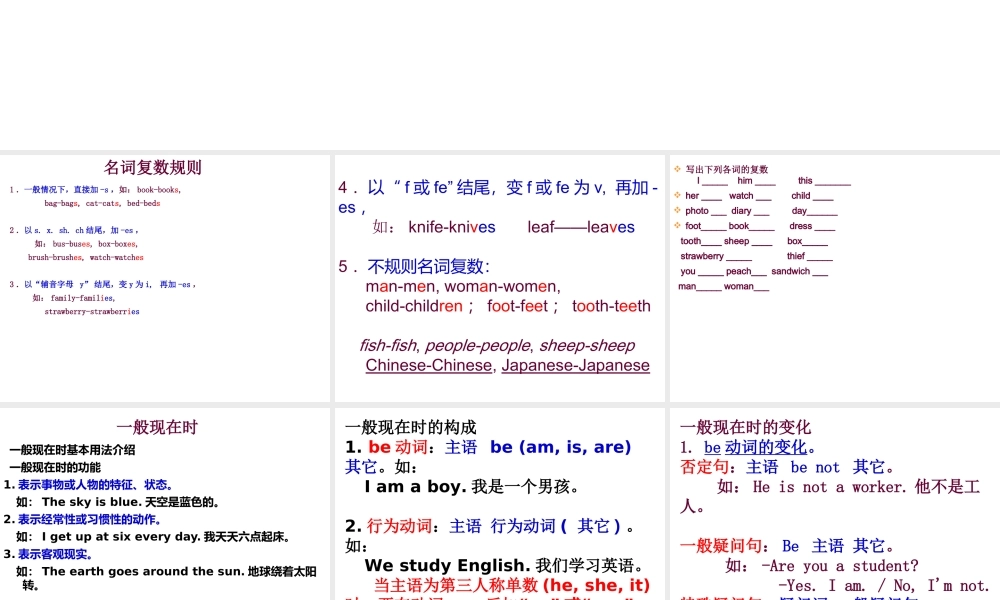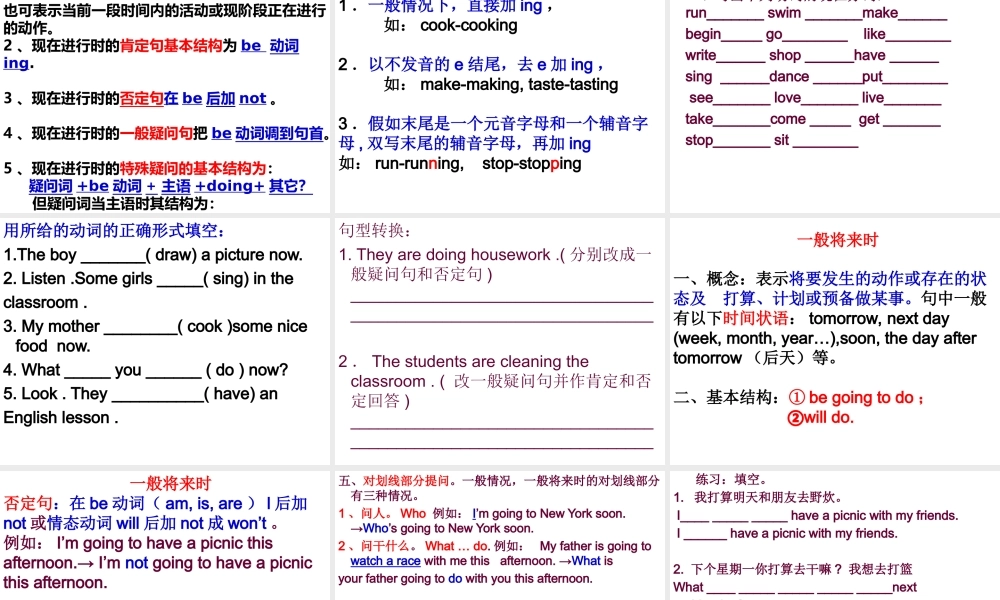小学英语语法总复习 1 .一般情况下,直接加 -s ,如: book-books, bag-bags, cat-cats, bed-beds2 .以 s. x. sh. ch 结尾,加 -es , 如: bus-buses, box-boxes, brush-brushes, watch-watches3 .以“辅音字母 y” 结尾,变 y 为 i, 再加 -es , 如: family-families, strawberry-strawberries名词复数规则 4 .以“ f 或 fe” 结尾,变 f 或 fe 为 v, 再加 -es , 如: knife-knives leaf——leaves 5 .不规则名词复数: man-men, woman-women, child-children ; foot-feet ; tooth-teeth fish-fish, people-people, sheep-sheep Chinese-Chinese, Japanese-Japanese 写出下列各词的复数 I _____ him ____ this _______ her ____ watch ___ child ____ photo ___ diary ___ day______ foot_____ book_____ dress ____ tooth____ sheep ____ box_____ strawberry _____ thief _____ you _____ peach___ sandwich ___ man_____ woman___ 一般现在时基本用法介绍 一般现在时的功能1. 表示事物或人物的特征、状态。 如: The sky is blue. 天空是蓝色的。2. 表示经常性或习惯性的动作。 如: I get up at six every day. 我天天六点起床。3. 表示客观现实。 如: The earth goes around the sun. 地球绕着太阳转。 一般现在时一般现在时的构成1. be 动词:主语 be (am, is, are) 其它。如: I am a boy. 我是一个男孩。2. 行为动词:主语 行为动词 ( 其它 ) 。如: We study English. 我们学习英语。 当主语为第三人称单数 (he, she, it)时,要在动词 后加“ -s” 或“ -es” 如: Mary likes Chinese. 玛丽喜欢汉语。一般现在时的变化1. be 动词的变化。否定句:主语 be not 其它。 如: He is not a worker. 他不是工人。 一般疑问句: Be 主语 其它。 如: -Are you a student? -Yes. I am. / No, I'm not.特殊疑问句:疑问词 一般疑问句。 如: Where is my bike?讲义共享 2. 行为动词的变化。否定句:主语 don’t( doesn’t ) 动词原形 ( 其它 ) 。 如: I don't like bread. 当主语为第三人称单数,用 doesn‘t 构成否定句 如: He doesn't often play. 一般疑问句: Do( Does )...




